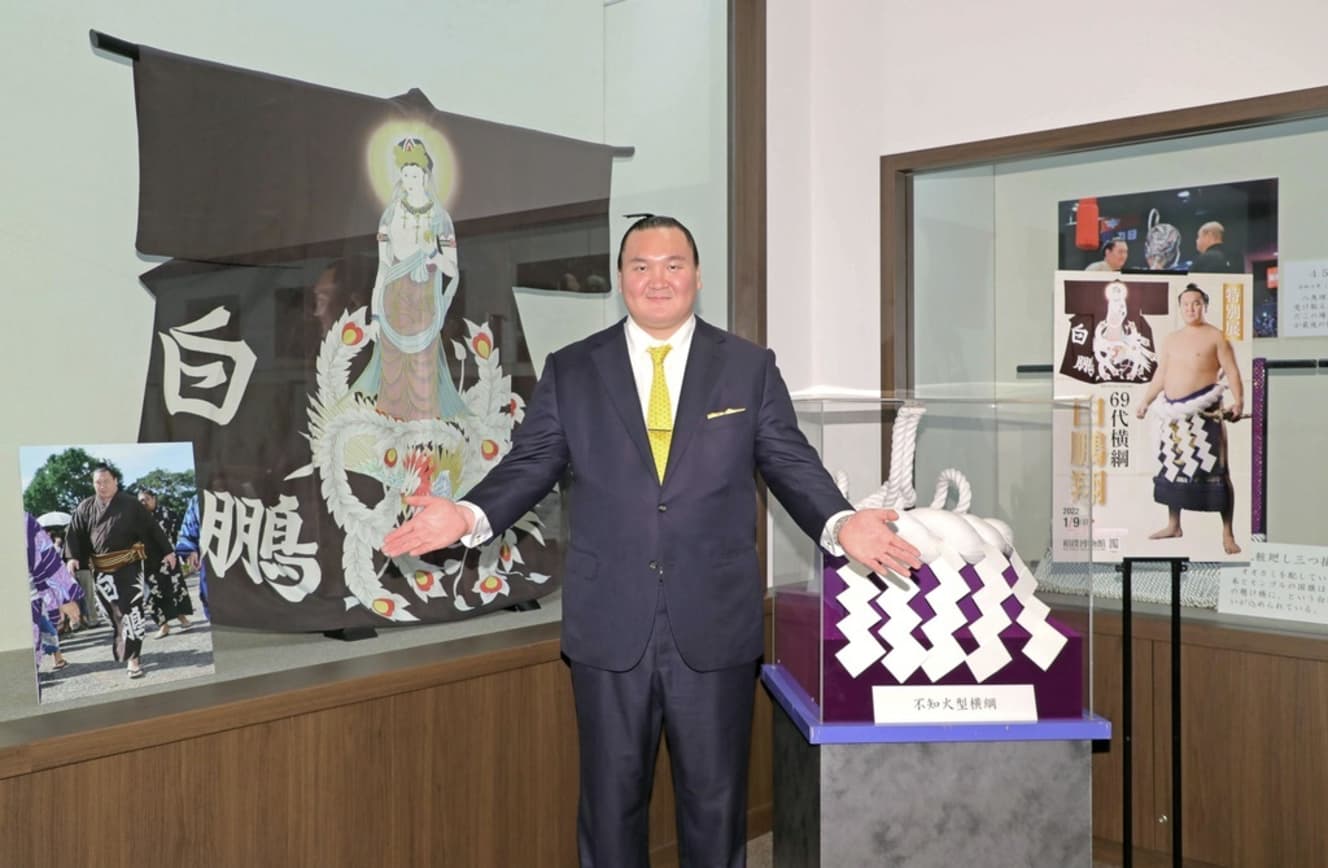Report on the purchase of a long-established restaurant, and the surprising reason for Hakuho’s insistence on establishing his stable in Asakusa

Former yokozuna Hakuho (36), who became the head of the Makigaki Oyakata, is enjoying a good reputation.
During the first tournament, which was held at the Ryogoku Kokugikan (Sumida Ward, Tokyo) until January 23, he worked as a commentator for NHK and wore a blue Sumo Association jumper to a store. At the same time, he wore a blue jumper of the Japan Sumo Association to the stall and was happy to take photos with fans.
Hakuho’s controversial gutsy poses during his active career led some in the Sumo Association to question whether he was the right person for the job. In fact, immediately after his retirement in September last year, Hakuho was made to sign a written pledge to ‘observe the traditional culture, spirit, manners, and customs of sumo and not to say or do anything out of line.
Hakuho’s reputation was well received when he opened the door. Hakuho himself said to those around him. This is the first time I’m going to the Kokugikan without thinking. Everything is fresh. It seems that he is enjoying his work as an oyakata, free from the pressure of his active career.
There are reports that Hakuho, who is in a new phase of his career, will establish a stable. The February 3 issue of Shukan Bunshun reported that Hakuho had decided to purchase the land and building of the old restaurant “Hisagoan” in Asakusa, which closed in July last year. According to the magazine, the land is 97 tsubo and the building has five floors above ground and one floor below. According to the magazine, the land is 97 tsubo and the building has five floors above ground and one below.
It is located near the Kaminarimon gate, a famous tourist spot, and was a prestigious ryotei restaurant established 75 years ago. It is also known that many Kabuki actors and ambassadors to Japan used it.
A glass-walled room in Ginza
Hakuho’s commitment to the establishment of the stable is strong. Hakuho has always said publicly that he wants to build a glass-walled room in Ginza.
There is a restaurant in Ginza called “H,” which is run by a former chankoban of the Miyagino Stable to which Hakuho belongs. There is a restaurant in Ginza called H, which is run by a former chankoban of Miyagino-tseya, the stable he belongs to. However, due to the location in Ginza, the budget he had prepared was not enough, and he had to give up.
The next place that came up for consideration was Nihonbashi. Instead of the central area with department stores such as Mitsukoshi and Takashimaya, they were looking for land and properties in more relaxed areas such as Kakigaracho and Hamacho. I heard that he had a hard time finding a property that met his needs in terms of land size and building size.
Hakuho is currently the stablemaster of the Miyagino Stable. Hakuho is currently the stablemaster of the Miyagino Stable, and his master, Miyagino Oyakata, will turn 65 this August and retire. Hakuho will automatically become the next Miyagino stablemaster and can inherit the stable.
The current room is too small. There are about 20 rikishi in the Miyaginobeya, including Ishiura and Taiho. The room is too small for a large group of wrestlers to train in, and it is rented. Hakuho has been thinking of moving to a new house when he changes his name. He has been looking for a plot of land with a floor space of about 100 tsubo since he was still active,” said a sports journalist.
There are probably other places near the Kokugikan that meet his requirements. Why does he insist on living in Ginza, Nihonbashi or Asakusa?
As a former yokozuna (sumo wrestler), he wanted to build his stable in an area where traditional Japanese culture still remains strong. As a former yokozuna (sumo wrestler), he wanted to create a room with an image that symbolizes Japan. He also has tourists from overseas in mind. He wants the room to be made of glass so that anyone can observe the training sessions. I guess he wants to introduce it to the people of his native Mongolia with pride.
The “great yokozuna of the Heisei era,” with a record 1,093 victories and 45 championships in the makuuchi division, is likely to leave a great mark as an oyakata as well.
photo: Kyodo News